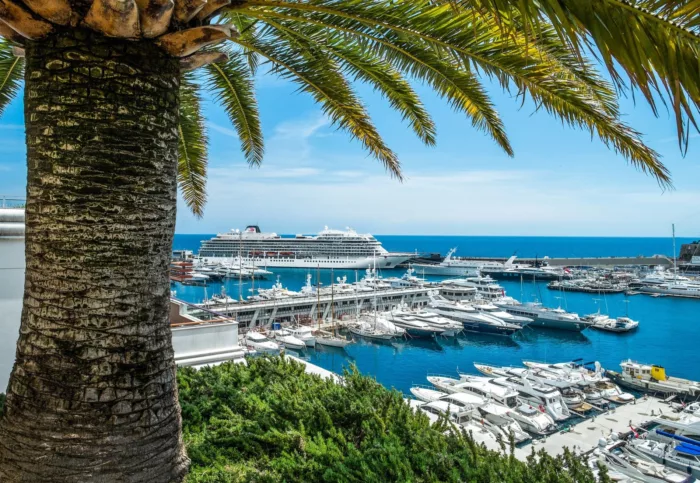
Treasures of the Mediterranean
Sailing in comfort around the Mediterranean, Nicole Trilivas discovers a new way of seeing some of the world’s most feted treasures
During my life I have been lucky enough to see some of the world’s most legendary archaeological sites, but after my Viking eight-day 'Ancient Mediterranean Treasures' journey, I can add quite a few more to the list.
Lovers of history and classical studies will delight in this port- packed trip which starts in Athens, then sails to the Greek islands of Crete and Rhodes, before heading into Turkey – to Ephesus, Troy and Istanbul.
It’s a tasting menu of UNESCO World Heritage Sites, with gems like the mosaic-carpeted Palace of the Grand Masters in Rhodes and the myth-rich ruins of Troy, as well as true icons, like the sun-bleached hilltop Acropolis in Athens and the hallowed sixth- century Hagia Sophia in Istanbul.
Even if you’re not the biggest fan of antiquity, the all-veranda small ship makes the journey a treasure in its own right.
It’s my first time on a cruise, and I’m especially impressed with the ship’s curio-filled Explorers’ Lounge, with endless vistas of waves and frothy clouds, and full spa, which is calming in that signature clean and uncluttered Nordic style.

The dining options are pretty impressive too: Manfredi’s is the spot for classic Italian fare, while The Kitchen Table offers a menu based on local flavours.
However, it’s the high-end Chef’s Table that steals the show with degustation menus (with optional wine pairings) that rotate every few days. I also love the Scandinavian bites at Mamsen’s cafe, a sweet tribute to the mother of the chairman of Viking, Torstein Hagen.
Don’t miss the traditional Norwegian waffle served with brown cheese (it’s delicious) or the charming tableware dressed in a midsummer floral pattern that has been in the Hagen family for generations.
Staterooms – of which there are 465 – are tranquil with blonde woods, pops of naval blue, and practical bathrooms, and service is superb.
Each evening, I come back to freshly polished shoes, pristinely folded laundry and a sweet treat like pastel macarons or strawberries dipped in chocolate.
I don’t spend too much time in my room, but when I do, I’m usually on the spacious veranda.
Every day, there’s an included excursion. I make the most of my time, going on a morning tour and adding a supplementary one in the afternoon on most days.
I’m surprised by just how much I get to see in such a short time, and how much I learn.
Onboard historians set the stage and provide context to the sites you’re about to see, and then passionate, on-the-ground guides bring the stories to life.

Seeing ancient ruin after ruin in quick succession like this threads history together and gives me a new perspective and appreciation of the ancient world.
At times, it feels more like time-travelling than touring. We first learn of the might and influence of the ancient Athenians while we’re in Athens, but by the time we get to Crete, we’re in the land of myths, speaking of King Minos of Crete, who commanded the Athenians to send youths in tribute each year to be devoured by the Minotaur.
It’s a key legend to keep in mind while visiting the Bronze Age Minoan Palace of Knossos, where, according to myth, King Minos kept the Minotaur.
In the Heraklion Archaeological Museum in Crete, our guide speaks not of myths but of the real-life trading patterns of the Minoans and rich influences from what is now Turkey.
Then, as if moving in their footsteps, we sail off to Rhodes – a cultural halfway point between the Grecian and the Anatolian.

From Rhodes, we sail to Turkey where stops include the ancient port city of Ephesus, once a centre for commerce, and, as the breath- taking Library of Celsus proves, culture.
As one of the world’s only remaining great libraries of classical antiquity, it’s impossible to not be impressed with the marvel.
Also, it helps that I’m visiting in January, when there are fewer tourists but temperatures are still mild, which shows off the site in the best light.
The fact that this itinerary runs all year round is a major selling point and it’s a good idea to book out of season if you want to see these ancient sites without the crowds.
After Ephesus, it’s on to Troy, with an almost palpable mythical weight and gravitas.
The voyage ends in the cymbal-clang to the senses that is Istanbul, where excursions include a night-time boat trip down the silvery, moon-lit Bosphorus and a tour of the spice-filled Grand Bazaar, made so much richer by having a tour guide.
No matter the port, one thing remains the same each time: I feel fully engulfed in the ancient world.
Get onboard
An eight-day Ancient Mediterranean Treasures journey, from Athens to Istanbul via Crete, Rhodes, Ephesus and Troy departs on various dates in 2024 from January to December (excluding February, July and October); 2025 dates also available. 2024 prices from £2,790 per person including seven nights in a standard stateroom.



























